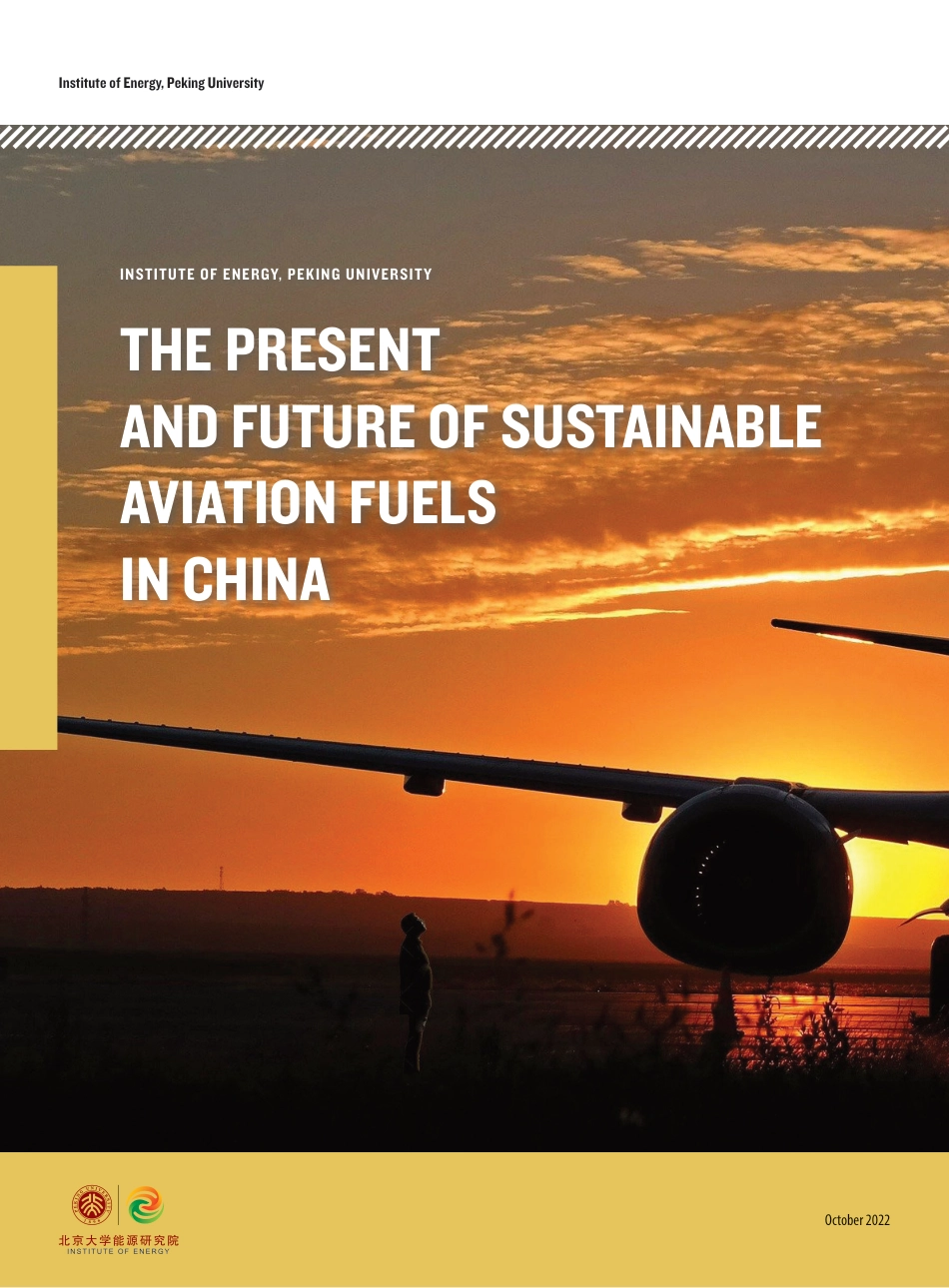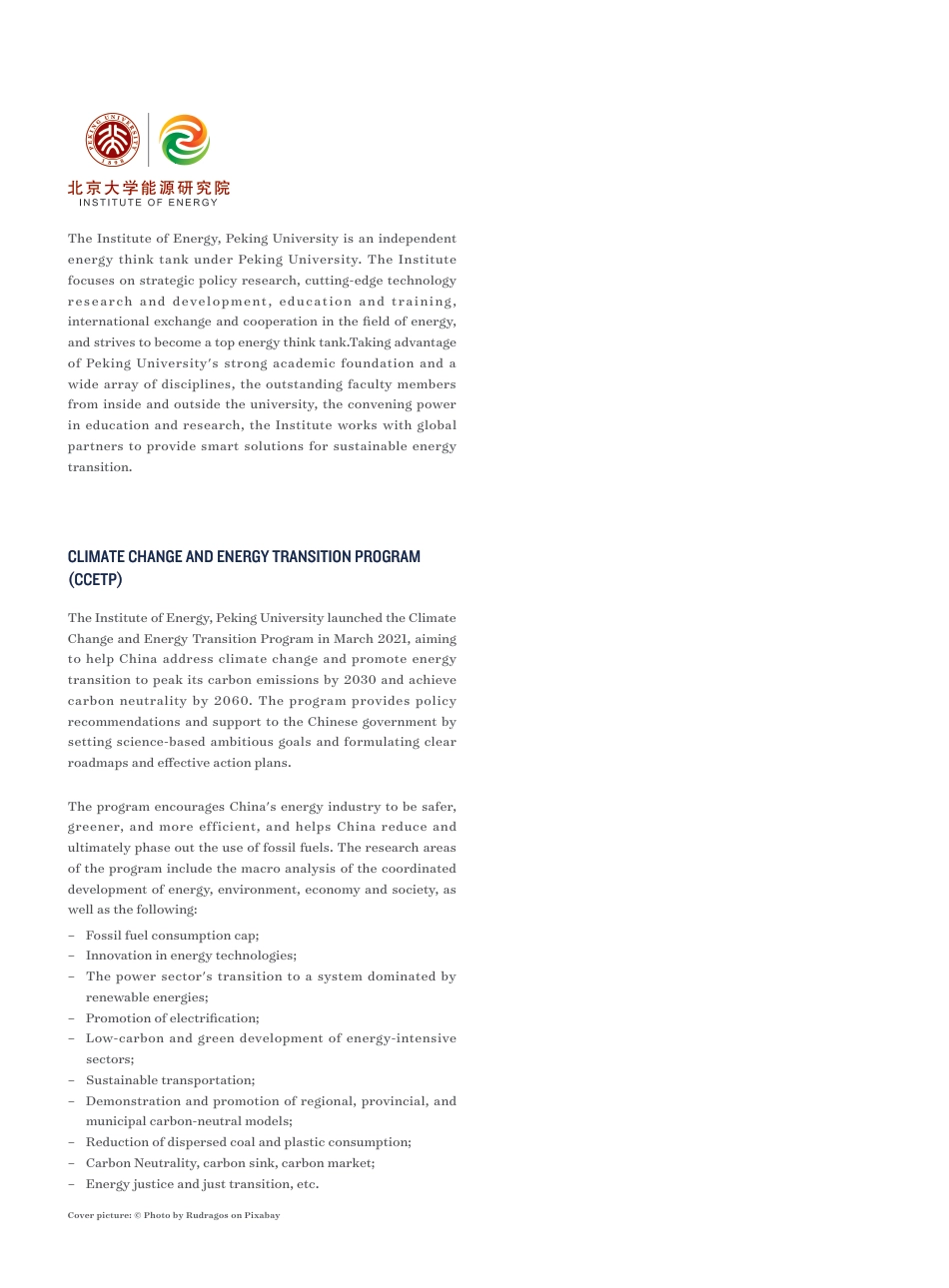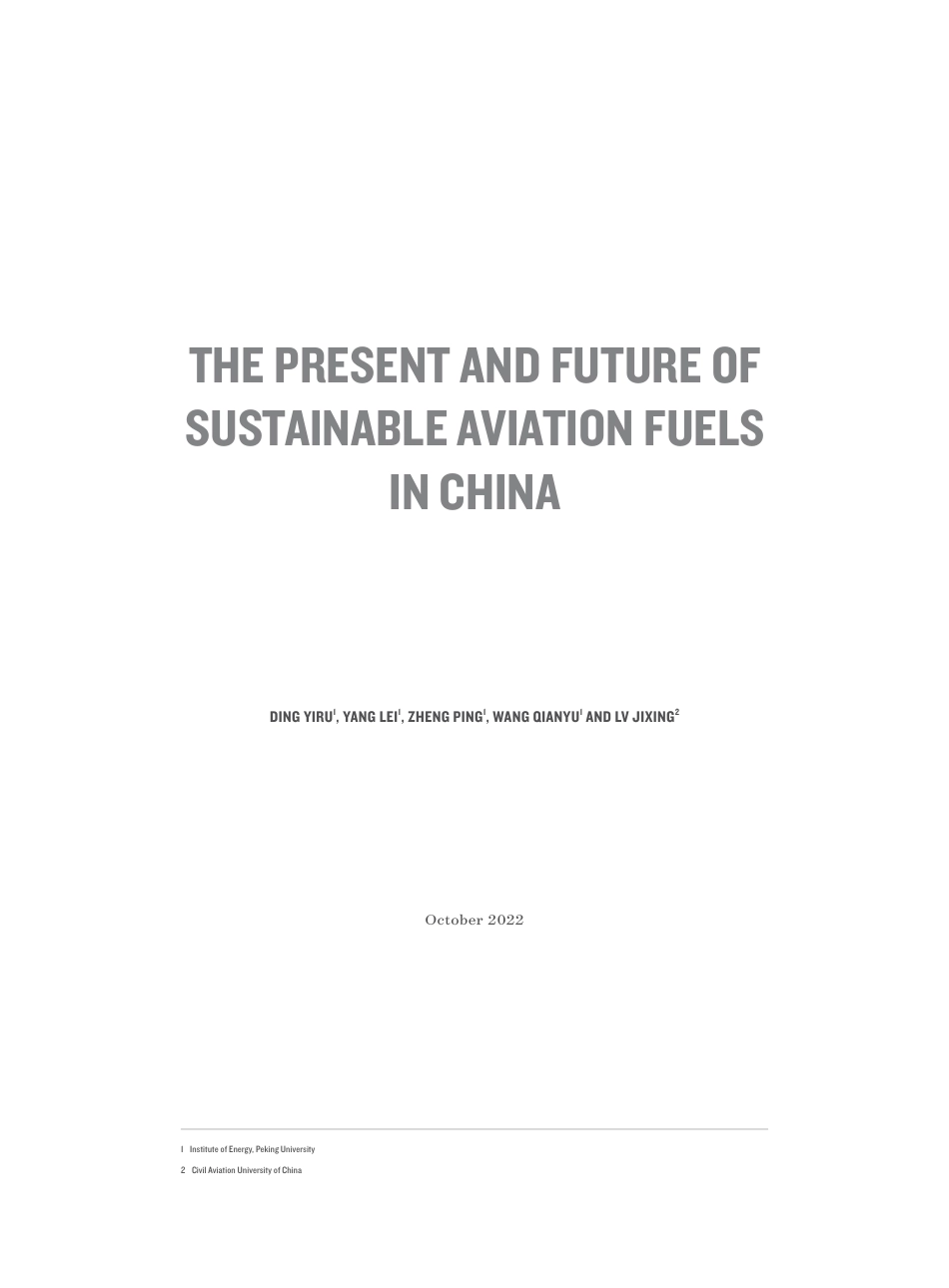INSTITUTE OF ENERGY, PEKING UNIVERSITYTHE PRESENT AND FUTURE OF SUSTAINABLE AVIATION FUELS IN CHINA Institute of Energy, Peking UniversityOctober 2022致 谢Cover picture: © Photo by Rudragos on PixabayThe Institute of Energy, Peking University is an independent energy think tank under Peking University. The Institute focuses on strategic policy research, cutting-edge technology research and development, education and training, international exchange and cooperation in the field of energy, and strives to become a top energy think tank.Taking advantage of Peking University's strong academic foundation and a wide array of disciplines, the outstanding faculty members from inside and outside the university, the convening power in education and research, the Institute works with global partners to provide smart solutions for sustainable energy transition.CLIMATE CHANGE AND ENERGY TRANSITION PROGRAM (CCETP)The Institute of Energy, Peking University launched the Climate Change and Energy Transition Program in March 2021, aiming to help China address climate change and promote energy transition to peak its carbon emissions by 2030 and achieve carbon neutrality by 2060. The program provides policy recommendations and support to the Chinese government by setting science-based ambitious goals and formulating clear roadmaps and effective action plans.The program encourages China's energy industry to be safer, greener, and more efficient, and helps China reduce and ultimately phase out the use of fossil fuels. The research areas of the program include the macro analysis of the coordinated development of energy, environment, economy and society, as well as the following: – Fossil fuel consumption cap; – Innovation in energy technolo...



